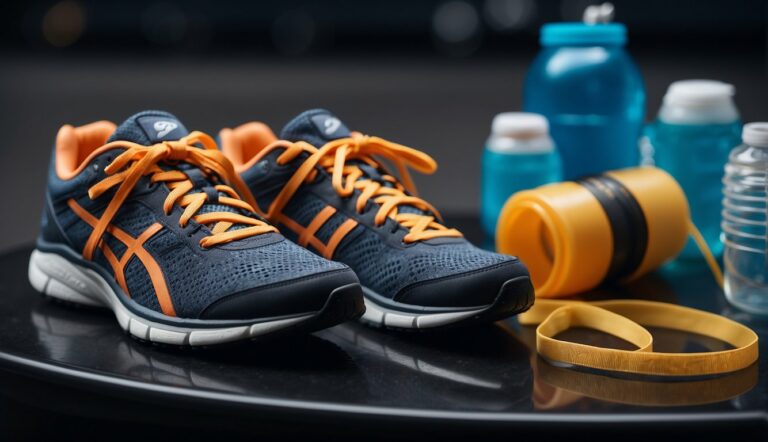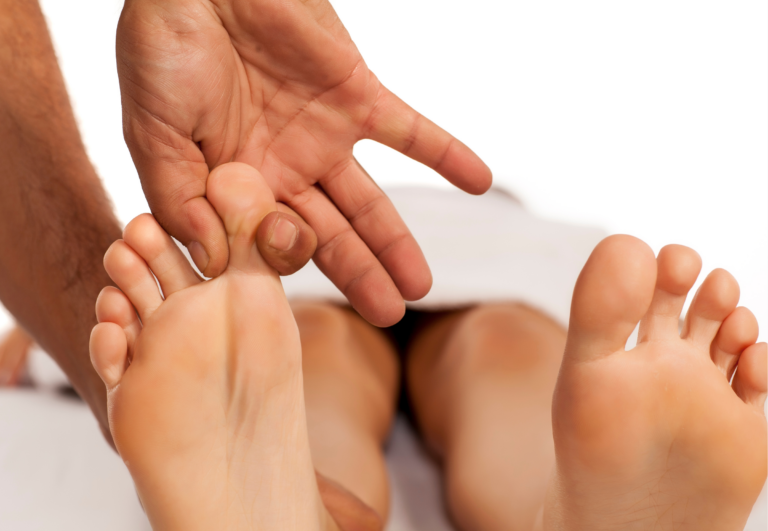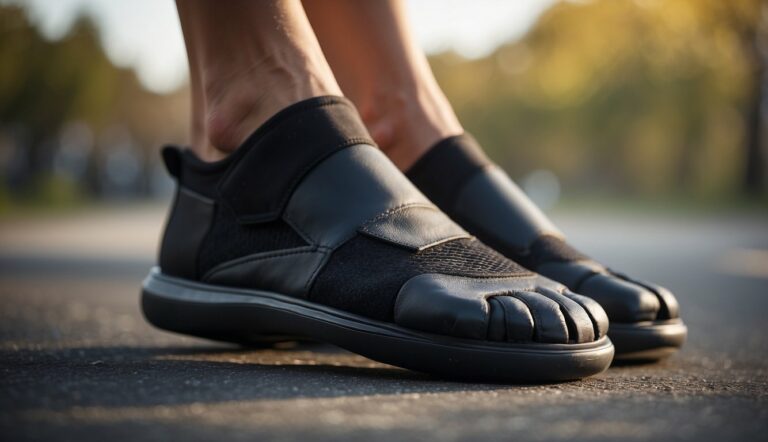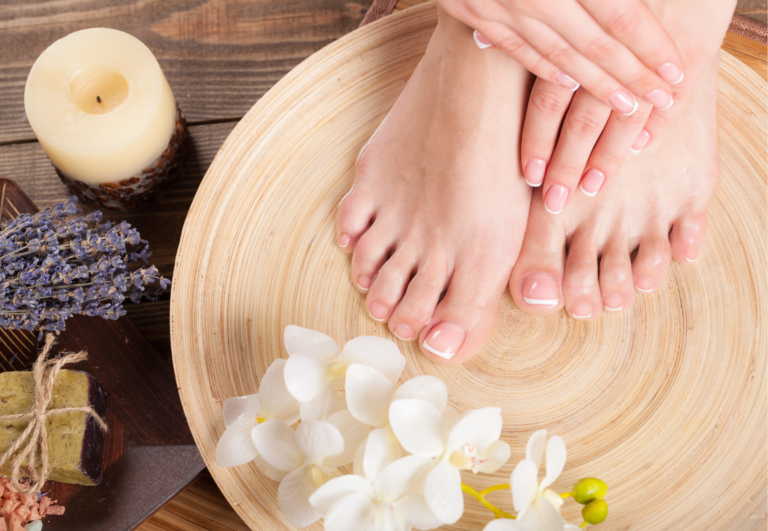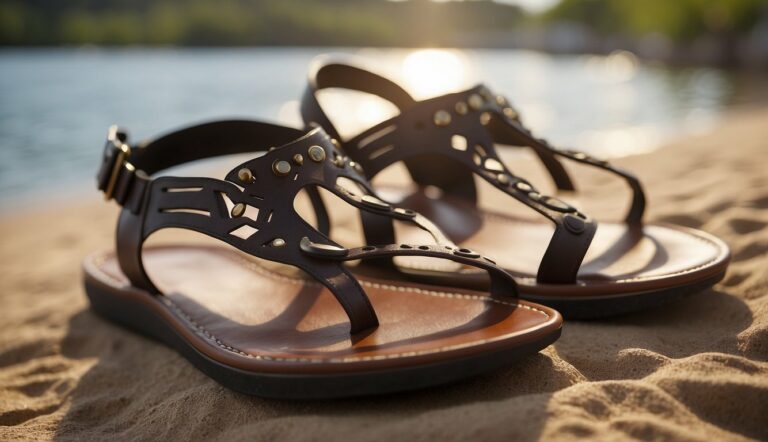Toe Spacer Routine: Benefits and Daily Practices for Healthy Feet
Toe spacers are a revelation for those seeking foot comfort and health. I’ve found them incredibly beneficial for maintaining proper toe alignment and overall foot structure. Wearing them regularly can help straighten toes, reduce overlapping, and support the alleviation of associated discomfort. The key is to introduce toe spacers to your regime in a gradual and measured way to let your feet adapt without stress.
Comfort is paramount when designing a toe spacer routine. I recommend initiating use with sessions of around 10-15 minutes per day. This time can be increased incrementally as your feet become accustomed to the spacers. Frequent use of these simple devices can eventually aid in strengthening foot muscles, leading to better balance and posture.
Incorporating toe spacers doesn’t require medical expertise, but an informed approach ensures maximum benefit. It’s not just about wearing them; it’s about integrating them thoughtfully into your daily life to promote foot health. Remember, while toe spacers are widely advocated for their benefits, it’s crucial to listen to your body and adjust usage if you experience any discomfort.
The Best Toe Spacer Routine for Maximum Results
For maximum results, a toe spacer routine should focus on progressive adaptation, consistent use, and complementary exercises that promote toe strength and flexibility. Here’s a suggested routine:
- Acclimation:
- Start by wearing the toe spacers for short periods, such as 10-15 minutes a day, and gradually increase the duration as your toes adapt.
- Toe Splay:
- With the spacers in place, actively spread your toes apart, hold for a few seconds, and then relax.
- Repeat for several sets to encourage toe mobility.
- Walking:
- Begin walking around your home with the toe spacers in place to help your feet adjust to the new alignment.
- Start with a few minutes a day and gradually increase the time as comfortable.
- Heel Raises:
- Stand with toe spacers in and slowly raise your heels, coming onto the balls of your feet.
- Lower back down with control.
- Perform several repetitions to strengthen your arches and calves.
- Toe Curls:
- Place a towel flat on the floor, and using your toes, scrunch the towel towards you, then release.
- This helps strengthen the muscles under your feet.
- Balance Exercises:
- Stand on one foot with toe spacers in to improve proprioception and stability.
- Hold the position for as long as possible, then switch feet.
- Consistent Use During Activity:
- As you get used to the toe spacers, incorporate them into your daily routine, wearing them during various activities, especially those that involve being on your feet.
- Progress to Exercise:
- Once comfortable, perform exercises like squats, lunges, and other movements with the toe spacers on to promote functional toe alignment during weight-bearing activities.
- Cool Down Stretches:
- At the end of the day, perform stretches for your toes, feet, and calves to maintain flexibility and reduce any tension built up during the day.
- Regular Assessment:
- Periodically assess your foot health and the comfort level of using toe spacers.
- If you experience any pain or discomfort, adjust the duration of use or consult with a healthcare professional.
Remember, the key to success with toe spacers is gradual progression and consistency. It’s important to listen to your body and not to force your toes into painful positions. For individuals with specific foot conditions, personalized advice from a podiatrist or foot specialist may be necessary.
An Overview of Toe Spacers
Toe spacers are designed to reposition the toes into a more natural alignment, which can mitigate pain and enhance foot health. I’ve found that using toe spacers can be an integral part of a foot care routine for both immediate relief and long-term benefits.
Types and Materials
Toe spacers vary in material, including silicone, gel, foam, and felt. Silicone spacers, in my experience, are durable and conform well to the toes, offering a balance between comfort and function. Gel types provide a softer cushion, while foam and felt are lightweight options, though they may not last as long.
Benefits of Toe Spacers
Regular use of toe spacers can improve toe alignment and foot strength, and encourage better balance and stability. By allowing the toes to spread naturally, they help increase circulation to the area, which I’ve seen provide relief from conditions like bunions, hammertoes, and plantar fasciitis.
Common Foot Ailments Addressed
Toe spacers can ease discomfort caused by a variety of foot ailments. Regular wear can provide pain relief and assist in the management of bunions, corns, calluses, and tender spots from hammertoes. They also aid in conditions like plantar fasciitis and can help correct flat feet over time.
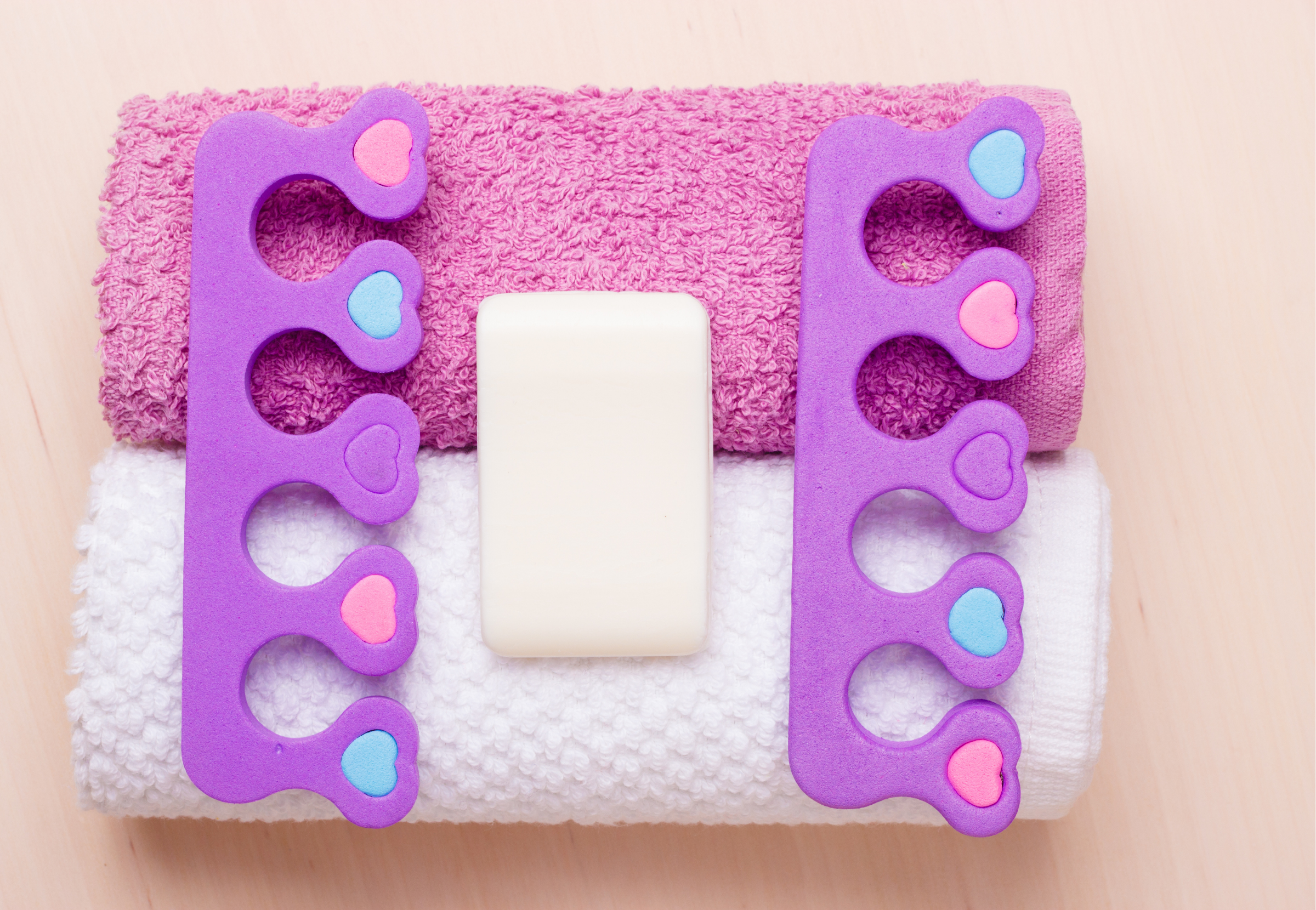
Proper Sizing and Fit
Selecting toe spacers with the right sizing and secure fit is crucial for comfort and effectiveness. An improper fit can lead to discomfort or even compounded foot issues. I recommend measuring your feet according to the manufacturer’s guidelines to ensure a proper fit.
When to Consult a Podiatrist
If you have persistent or severe foot pain and foot conditions, consulting a podiatrist is advisable. While toe spacers can provide relief, professional advice is essential for serious issues. A podiatrist can determine if toe spacers are appropriate for your specific foot condition.
Toe Spacer Hygiene
To maintain toe spacer hygiene, choose materials that are easy to clean, such as silicone or gel. Clean them regularly using mild soap and water to prevent bacterial growth. I’ve found that spacers made of these materials are less likely to harbor bacteria and fungi compared to porous materials like foam.
Implementing a Toe Spacer Routine
From my experience, the key to implementing an effective toe spacer routine is structure and dedication. Precision in the steps you take ensures optimal foot health and improvement in toe alignment.
Daily Warm-Up and Cool-Down
Before using toe spacers, it’s essential to prepare the feet with a warm-up routine. This can involve simple movements like wriggling the toes or performing ankle circles to enhance circulation. Cool-down exercises after spacer use can include gentle toe massages to promote recovery and lessen inflammation.
Stretching and Strengthening Exercises
Incorporate a variety of foot stretches such as flex and point or toe presses to enhance flexibility and strength in the foot muscles. Toe spacers assist in these exercises by promoting proper toe splay and joint alignment. Strengthening exercises may include squats or single-leg balances to improve overall toe and foot function.
Consistency and Patience
A routine that is followed consistently is more likely to yield positive results. Be patient; changes in toe alignment and foot health take time. Regularly spaced sessions, done daily or a few times a week, can offer gradual pain relief and improvement in foot function.
Incorporating Movement and Mobility
Movement exercises with toe spacers, like mindful walking or mobility drills, can help integrate the benefits into your gait and running form. Ensure that movements are performed in proper footwear that accommodates spacers for a comfortable fit.
Post-Activity Care
Recovery shouldn’t be neglected. Post-use care involves assessing any soreness in the toes and feet and allowing adequate rest. If discomfort persists, consulting a healthcare professional is advisable.
Monitoring Progress and Adjustments
Regularly evaluating the changes in toe alignment and ease in foot movements can be motivational. Record any reductions in discomfort or enhancements in balance and stability. Adjust your routine as needed for continuous improvement.
Footwear Considerations
Finally, choosing proper footwear is vital for toe health. Shoes with wider toe boxes support the natural toe splay, whereas high heels or shoes with narrow toe boxes can inhibit it. It may also be beneficial to consider insoles that complement your toe spacer routine.
Maximizing the Benefits
Integrating toe spacers into your routine can lead to improved foot strength, flexibility, and health. When used correctly, they can address foot conditions and align the feet to their natural position.
Long-Term Foot Health Strategies
Implement long-term strategies to ensure overall foot health. Daily stretching of the foot muscles can increase flexibility, while regular exercises that focus on the big toe and foot muscles can enhance foot strength. Incorporate toe spacers into your routine to promote proper alignment and prevent issues like bunions and hammertoes.
My Foot Stretching Routine:
- Warm-up with light foot exercises (5 minutes)
- Insert toe spacers (2 minutes)
- Stretch while spacers are in place (10 minutes)
- Cool down by walking around (5 minutes)
Addressing Specific Foot Conditions
For those suffering from conditions such as bunions, hammertoe, or hallux valgus, toe spacers can provide relief. They aid in correcting the foot structure by gently separating the toes to a natural state, reducing pressure and the formation of corns and calluses. It’s important to gradually increase usage time to give muscles the chance to adapt.
Impact of Toe Spacers on Posture and Alignment
Toe spacers influence the stability and balance of the entire body. Proper alignment starts with the feet, and by separating the toes to their natural position, they can contribute to improved posture. I’ve observed a notable difference in my stability during balance exercises since incorporating toe spacers into my regimen.
Lifestyle Changes for Enhanced Results
Embrace changes that complement the use of toe spacers: choose proper footwear with wide toe boxes for comfort and avoid high heels that can exacerbate foot discomfort. Maintaining an active lifestyle, with a focus on foot care, enhances the benefits of toe spacers for mobility and overall foot comfort.
Pro Tip: Combination with Other Foot Gear
For optimal results, combine toe spacers with other foot gear. For instance, using compression socks in conjunction with toe spacers can enhance blood flow, which is especially beneficial for people with diabetes or rheumatoid arthritis. Additionally, toe stretchers can be used during rest periods or post-exercise for extra stretching.
Choosing the Right Toe Spacers
When selecting toe spacers, it’s important to consider material quality, suitability for your foot type, and cost. These factors ensure a proper fit and contribute to improved foot health.
Material and Quality Considerations
Materials: Toe spacers are commonly made from medical-grade gel or silicone, which is essential for durability and comfort. A soft material is less likely to irritate the skin between the toes.
Quality: High-quality toe spacers should maintain their shape over time, resisting the wear and tear from regular use.
Suitability for Various Foot Types
- Alignment: The primary goal is to promote proper toe alignment, which can alleviate foot pain and correct foot issues.
- Foot Structure: Different spacers work better for various foot ailments, such as bunions or corns.
Product Reviews and Recommendations
- Product Reviews: I look for products with high ratings that indicate satisfaction with foot comfort and proper fit.
- Recommendations: A toe spacer that is frequently recommended by a podiatrist often signals a beneficial product.
Custom vs. Off-the-Shelf Options
- Custom Fit: Custom spacers designed by healthcare professionals can address individual foot function and proper alignment needs.
- Off-the-Shelf: Standard spacers are more readily available and can be suitable for general foot comfort and alignment.
Cost and Accessibility
- Cost-Effectiveness: While custom options can be more expensive, they may offer better long-term foot health benefits.
- Accessibility: Off-the-shelf spacers are generally more affordable and widely accessible for immediate foot comfort relief.
Frequently Asked Questions
In my experience with toe spacers, common questions often arise regarding their use, benefits, and maintenance. I’ll address these inquiries based on what I’ve learned and observations I’ve made.
Can Toe Spacers Help with Foot Pain?
Toe spacers can provide pain relief for various foot ailments by promoting proper alignment of the toes. They may help alleviate discomfort caused by conditions like bunions (hallux valgus) and overlapping toes by gently separating them. This can reduce stress on tendons and ligaments and aid in preventing further misalignment.
How Long Should Toe Spacers Be Worn?
It’s best to begin with short periods and gradually increase use as your feet adjust. For some, incorporating toe spacers into a daily routine for about 10-30 minutes can offer benefits. Eventually, certain individuals may use them for extended periods, even long-term use during activities like running, to promote foot health and proper running form.
Are There Any Risks or Side Effects?
Like any intervention, there’s a potential for risks or side effects. Initially, you may experience some discomfort as your toes adjust. Be vigilant for signs of excess pressure or blisters. If pain persists or worsens, discontinue use and consult a healthcare professional to ensure there are no underlying foot issues.
Can Athletes Benefit from Toe Spacers?
Athletes, particularly runners, may find improvements in mobility and running form from toe spacers. They can help in correcting misalignment and strengthening foot muscles, which could lead to improved performance and potentially reduce the risk of injury.
How to Maintain Toe Spacers for Longevity?
To ensure the hygiene and durability of your toe spacers, clean them regularly according to the manufacturer’s instructions. Opt for high-quality materials that are durable and hypoallergenic. Proper maintenance keeps the toe spacers in good condition and extends their lifespan.
